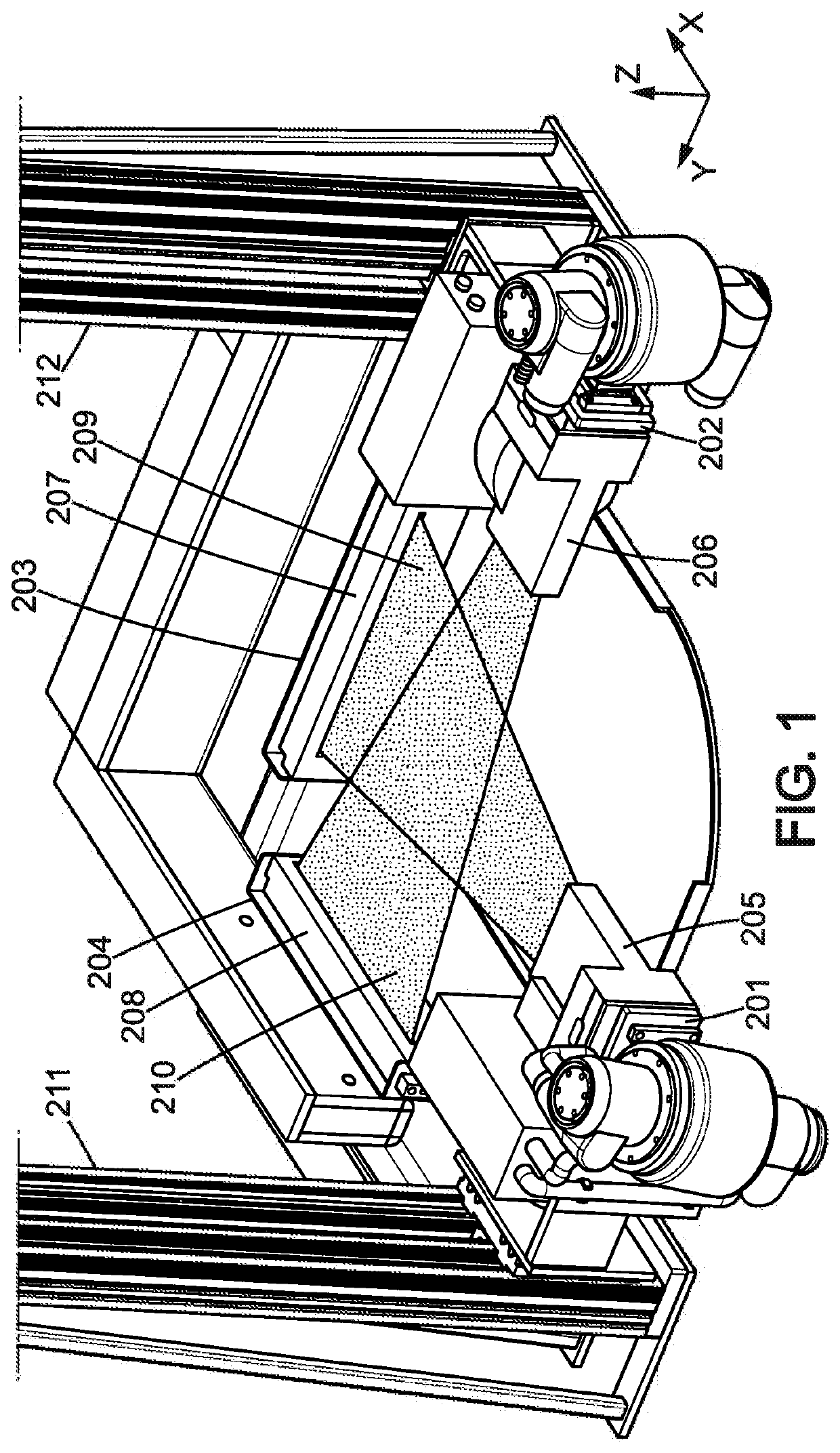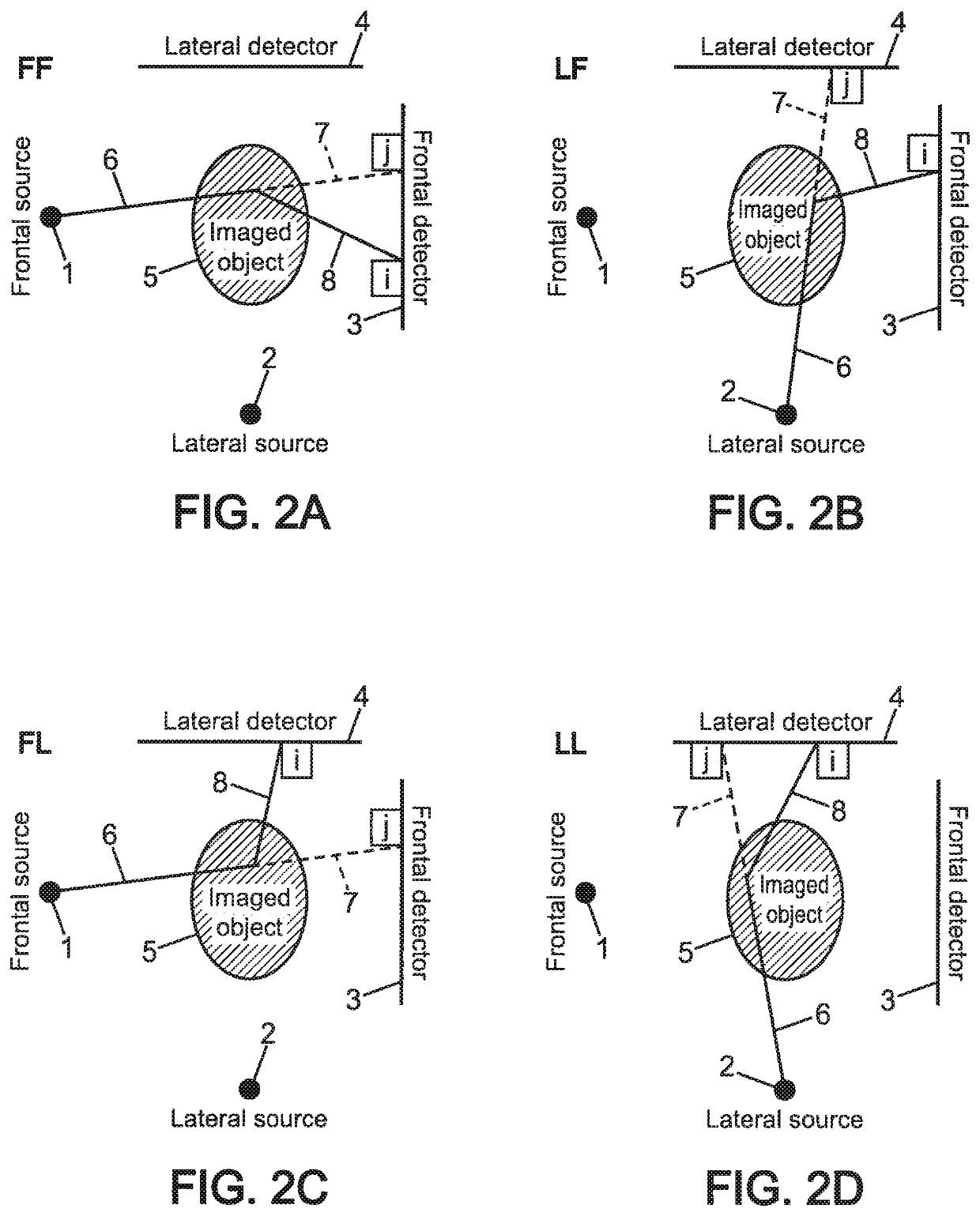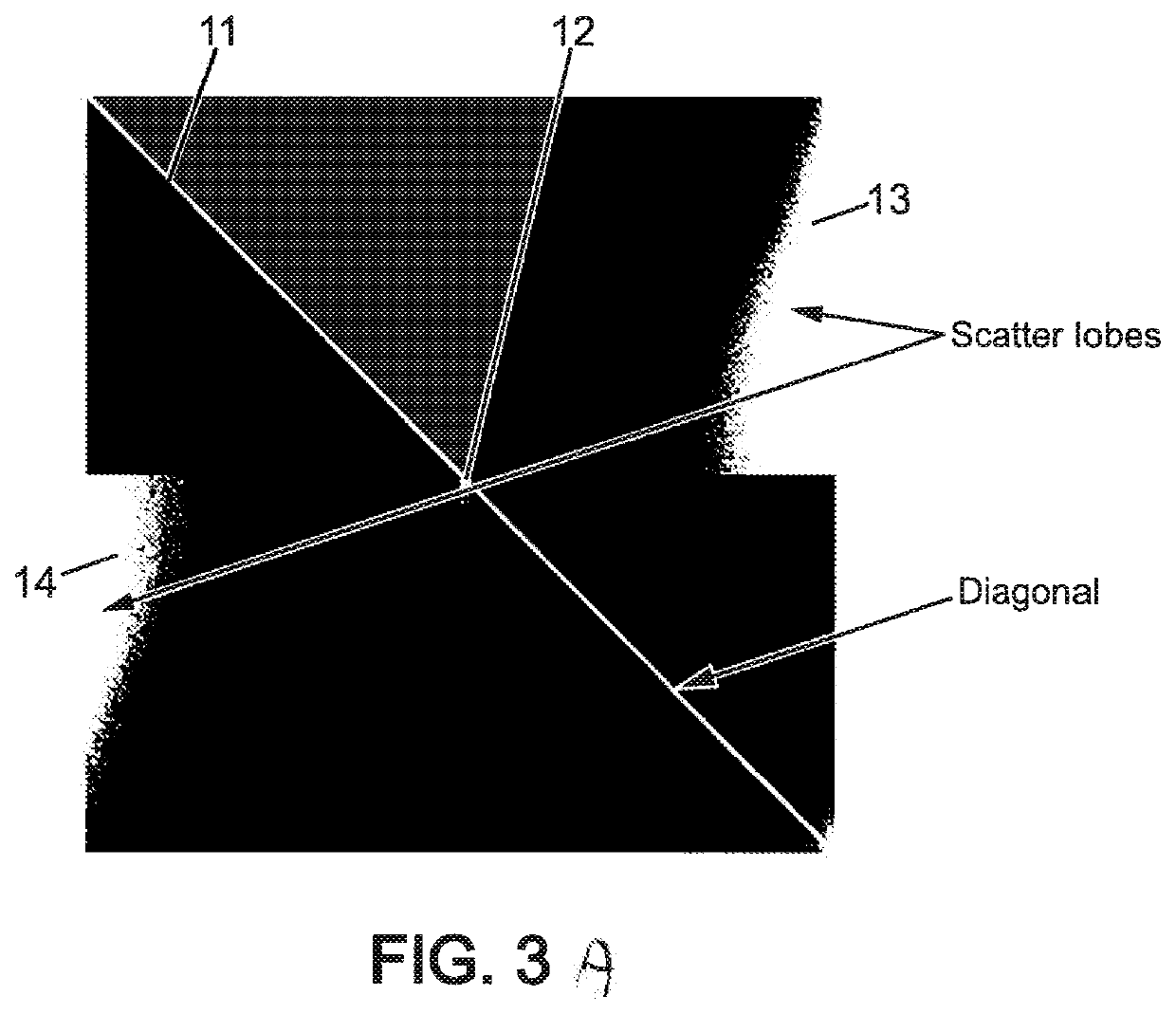Method of radiography of an organ of a patient
- Summary
- Abstract
- Description
- Claims
- Application Information
AI Technical Summary
Benefits of technology
Problems solved by technology
Method used
Image
Examples
first embodiment
[0168]FIG. 6 shows an example of performing the steps of the method of radiography of an organ of a patient according to the invention, with use of scatter matrix and with scattered signal being under-sampled as compared to direct signal.
[0169]The different and successive steps of the scatter correction method to correct a given line of pixels on both frontal and lateral views with a preexisting matrix are hereby described.
[0170]In a step 30, frontal and lateral images are acquired.
[0171]In a step 31, those frontal and lateral images are denoised.
[0172]In a step 32, those frontal and lateral images are each divided into sub-images along vertical axis whose height is about 1 cm, representing some consecutive columns of aggregated image.
[0173]In a step 33, for each sub-image, the nearest combination of base ellipses within a predetermined family is found.
[0174]In a step 34, each sub-image is under-sampled, typically to 2 mm wide pixels.
[0175]In a step 35, either there is an under-samp...
second embodiment
[0190]FIG. 8 shows an example of performing the steps of the method of radiography of an organ of a patient according to the invention, with use of scatter matrix and with scattered signal at same sample rate as compared to direct signal.
[0191]The different and successive steps of the scatter correction method to correct a given line of pixels on both frontal and lateral views with a preexisting matrix are hereby described.
[0192]In a step 50, frontal and lateral images are acquired.
[0193]In a step 51, those frontal and lateral images are denoised.
[0194]In a step 52, those frontal and lateral images are each divided into sub-images along vertical axis whose height is about 1 cm, representing some consecutive columns of aggregated image.
[0195]In a step 53, for each sub-image, the nearest combination of base ellipses within a predetermined family is found.
[0196]A scatter matrix is chosen in the matrices database corresponding to the nearest combination of base ellipses. Here the databa...
third embodiment
[0253]FIG. 18 shows an example of performing the steps of the method of radiography of an organ of a patient according to the invention, with use of 3D avatar for patient specific modeling and with scattered signal being under-sampled as compared to direct signal.
[0254]The different and successive steps of the scatter correction method to correct a given line of pixels on both frontal and lateral views with a preexisting generic model of a patient are hereby described. This predetermined generic model is preferably common to all patients. If there is a predetermined set of generic models, there will be an additional preliminary step of choosing the most adapted generic model with respect to the patient corpulence.
[0255]In a step 120, frontal and lateral images are acquired.
[0256]In a step 121, a 3D (three dimensional) avatar is got both from the chosen generic model and from those raw frontal and lateral images. The raw frontal and lateral images are used to modify the generic model...
PUM
 Login to View More
Login to View More Abstract
Description
Claims
Application Information
 Login to View More
Login to View More - R&D
- Intellectual Property
- Life Sciences
- Materials
- Tech Scout
- Unparalleled Data Quality
- Higher Quality Content
- 60% Fewer Hallucinations
Browse by: Latest US Patents, China's latest patents, Technical Efficacy Thesaurus, Application Domain, Technology Topic, Popular Technical Reports.
© 2025 PatSnap. All rights reserved.Legal|Privacy policy|Modern Slavery Act Transparency Statement|Sitemap|About US| Contact US: help@patsnap.com



